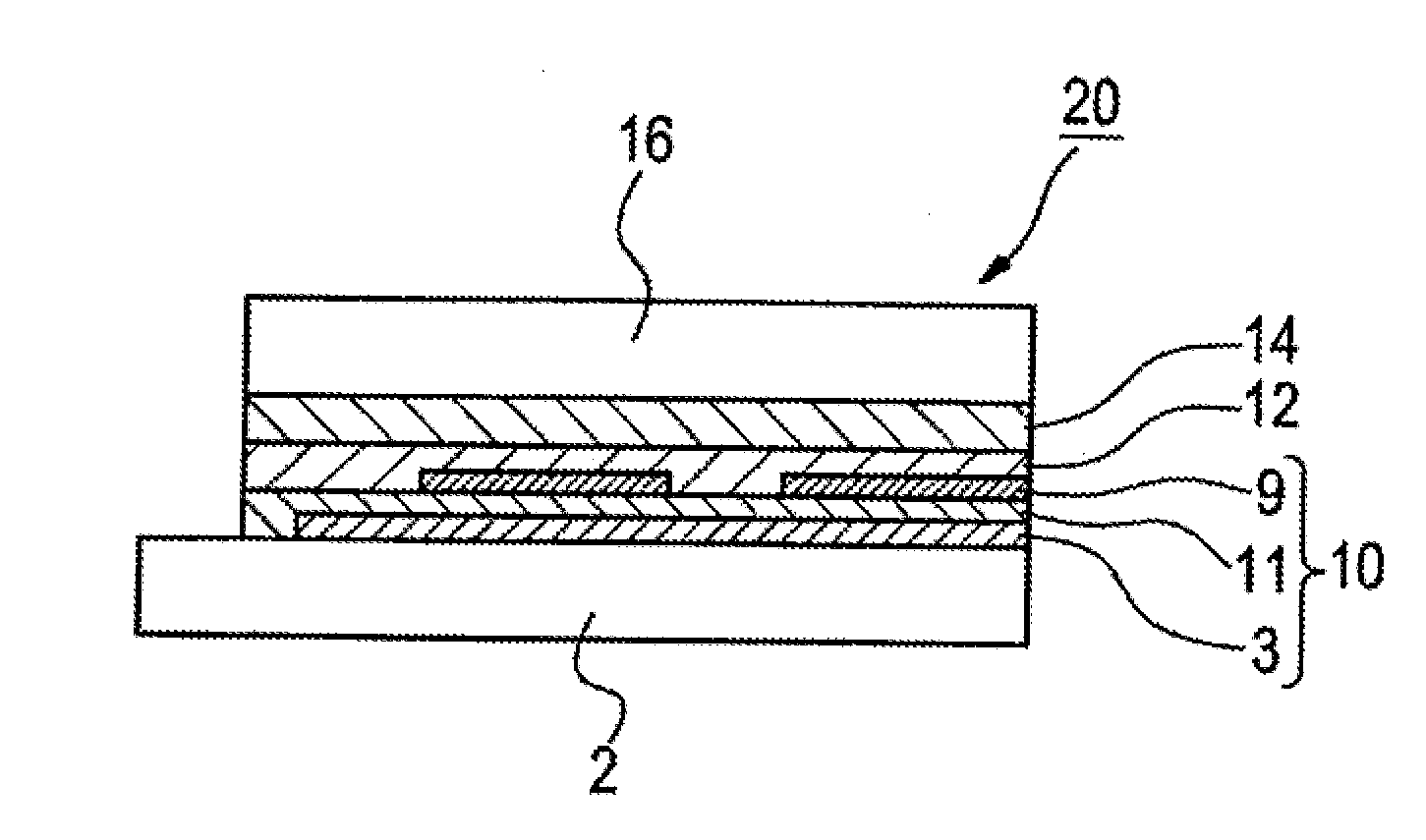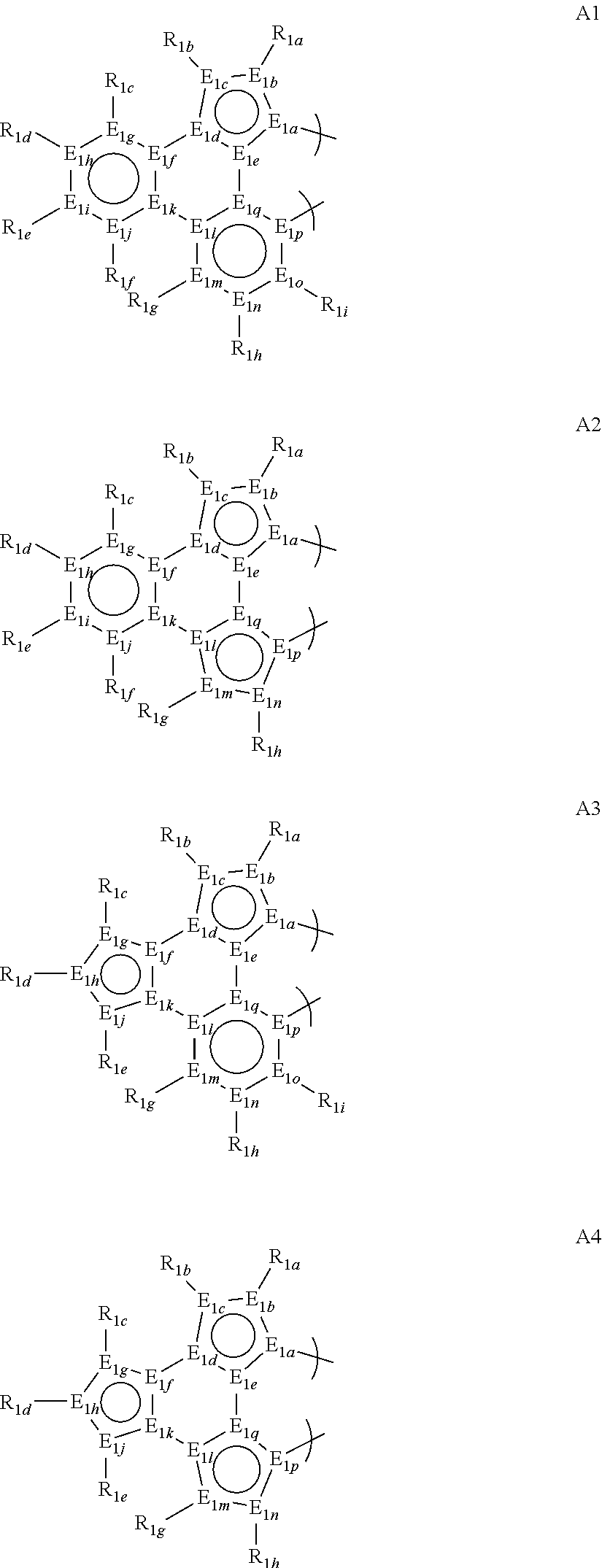Organic electroluminescence device
a technology of electroluminescence device and organic material, which is applied in the direction of discharge tube/lamp details, luminescnet screen of discharge tube, natural mineral layered products, etc., can solve the problems of shortening the life of the device, requiring further improvement of conventional devices, and low external quantum efficiency of devices using condensed-ring-type phosphorescent materials, etc., to achieve excellent luminous efficiency and small dependence of luminous efficiency
- Summary
- Abstract
- Description
- Claims
- Application Information
AI Technical Summary
Benefits of technology
Problems solved by technology
Method used
Image
Examples
example 1
[0285]A 0.5-mm thick and 2.5-cm square glass substrate (product of Geomatec Corp., surface resistance: 10 nip) having an indium tin oxide (ITO) film was placed in a washing container. After ultrasonic washing in 2-propanol, the substrate was subjected to UV-ozone treatment for 30 minutes. The following organic layers were deposited successively on the resulting transparent anode (ITO film) by vapor deposition.
First layer: ITO / CuPc (copper phthalocyanine), film thickness: 10 nm
Second layer: NPD (N,N′-di-α-naphthyl-N,N′-diphenyl)-benzidine), film thickness: 30 nm
Third layer: dopant (10 mass %), host material (mCBP) (90 mass %), film thickness: 30 nm
Fourth layer: first electron transporting material (BAlq), film thickness: 40 nm
Fifth layer: second electron transporting material (Alq (tris(8-hydroxyquinoline)aluminum complex)), film thickness: 0 nm
[0286]Then, lithium fluoride and metal aluminum were deposited on the fifth layer to give their thicknesses of 0.2 nm and 70 nm, respectively...
PUM
| Property | Measurement | Unit |
|---|---|---|
| triplet excited state T1 energy | aaaaa | aaaaa |
| emission wavelength | aaaaa | aaaaa |
| dihedral angle | aaaaa | aaaaa |
Abstract
Description
Claims
Application Information
 Login to View More
Login to View More - R&D
- Intellectual Property
- Life Sciences
- Materials
- Tech Scout
- Unparalleled Data Quality
- Higher Quality Content
- 60% Fewer Hallucinations
Browse by: Latest US Patents, China's latest patents, Technical Efficacy Thesaurus, Application Domain, Technology Topic, Popular Technical Reports.
© 2025 PatSnap. All rights reserved.Legal|Privacy policy|Modern Slavery Act Transparency Statement|Sitemap|About US| Contact US: help@patsnap.com



